Bhopal: Global warming, it seems, has hit the poor people of Bundelkhand in Madhya Pradesh harder. A fourth successive drought in the last five years has shattered the people of this backward region. Mercury is already touching 46 degrees Celsius, water has evaporated from all rivers and ponds, and the tube wells are dry.
People of a small village in Tikamgarh, one of the drought-hit districts of the backward region of Bundelkhand, risk their lives every day as they fetch water from an ancient dug well. As they step down on loose stone blocks, villagers form a human chain from up to down to fill utensils with muddy water from the well.
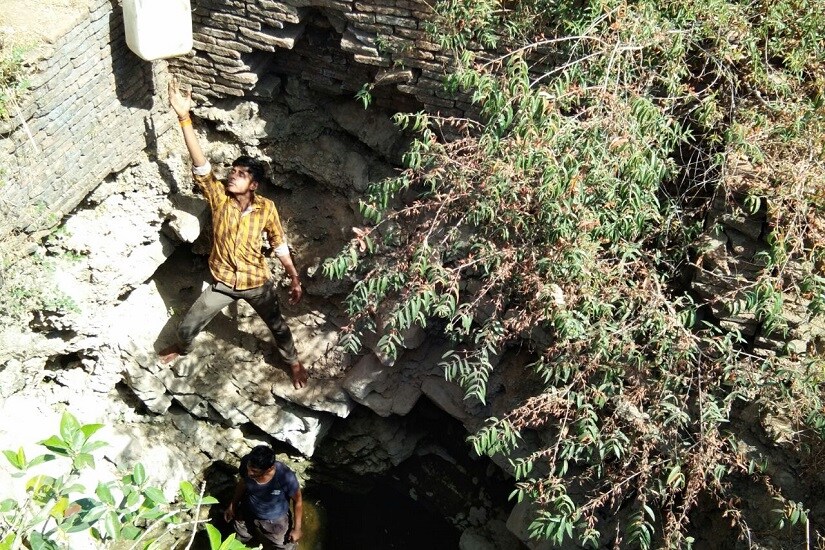
People of a small village in Tikamgarh risk their lives daily to fetch water from an ancient dug well. Firstpost
These days, the people in Ataria village of Tikamgarh district, with a population of 3,000, follow the same routine to quench their thirst. Every day, they go down into the dug well carefully to get water for their daily consumption.
The villager who stands at the bottom of the chain fills up a vessel and passes it up to the man standing at the next stone block. Exchanging hands, the water vessel is ultimately pulled out of the of the water body, explains Babulal Yadav, a student who seems to have expertise in the art of fetching water with acrobatic movements.
But as the well water is not enough, the villagers in Ataria walk down or travel on bicycles or bikes up to five kilometres to Pathrai village of neighbouring Lalitpur in Uttar Pradesh, to fetch water from a private tube well.
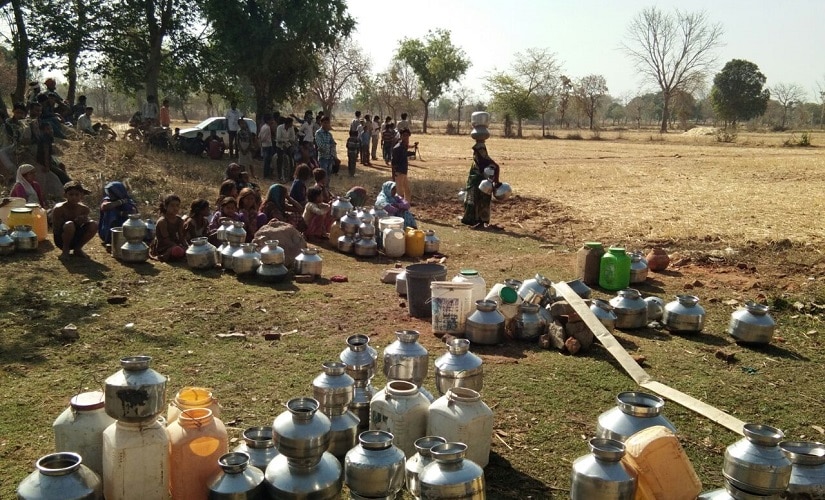
Villagers in Ataria walk down or travel on bicycles up to five kilometres to fetch water from a private tube well. Firstpost
About 200 kilometres away in Hardua in Damoh district, with a population of more than 1,500 marginalised, people also follow the same routine. After all the 10 hand pumps in the village have gone dry, an old dug well has still not betrayed them, said Sudha Yadav, the village sarpanch.
The two villages symbolise the drought in Bundelkhand affecting mainly the districts of Damoh, Chhatarpur, Sagar, Panna and Tikamgarh in Madhya Pradesh. People in urban areas this region either get water supply once in three to six days, depending on availability, or water is transported in tankers from one locality to other.
Officially, the state government announced drought in 110 tehsils of 13 districts, including the five rain-starved districts of Bundelkhand. Last year, it hardly rained in the region leading to yet another drought.
Amidst the human misery, there is a severe shortage of fodder and water for the cattle. Following the drought, a large number of people continue to migrate in search of water and jobs.
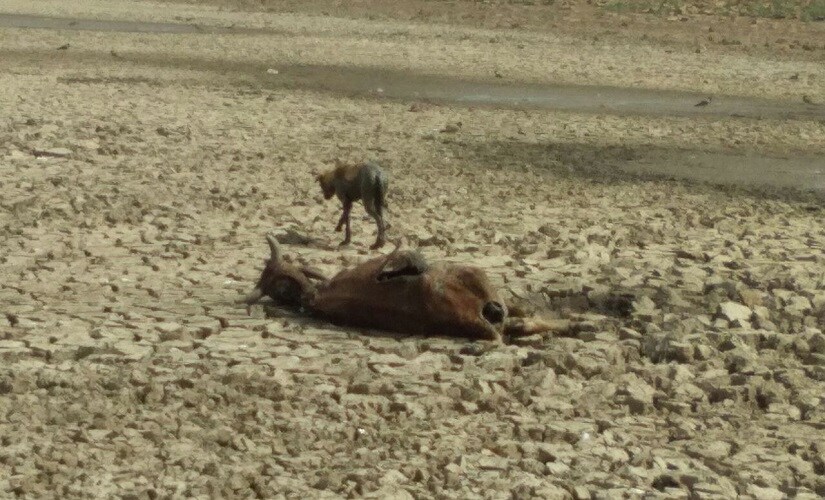
Amidst human misery, there is a severe shortage of fodder and water for the cattle. Firstpost
Rajendra Singh, popularly known as water-man of India, said, "it appears that climate change has further worsened the plight of the poor." The drought is harsher this time. "People are not only migrating but also not returning to their native villages leaving behind elderly and cattle. Many of them are leaving forever after continuous joblessness and water crisis," he added.
"We carried a survey," he said, "and the findings revealed that 70-90 percent hand pumps have dried in Bundelkhand. Almost 50-90 percent of water bodies including rivers and Chandela period ponds have also dried. More than 70 percent farmers sustained loss during last kharif season and almost 40 percent families are facing food security crisis."
"More than 80 percent farmers don't find proper livelihood opportunity in villages and almost 65 percent migrated to the places like Delhi, Punjab, Haryana or Gujarat in search of a job," he said.
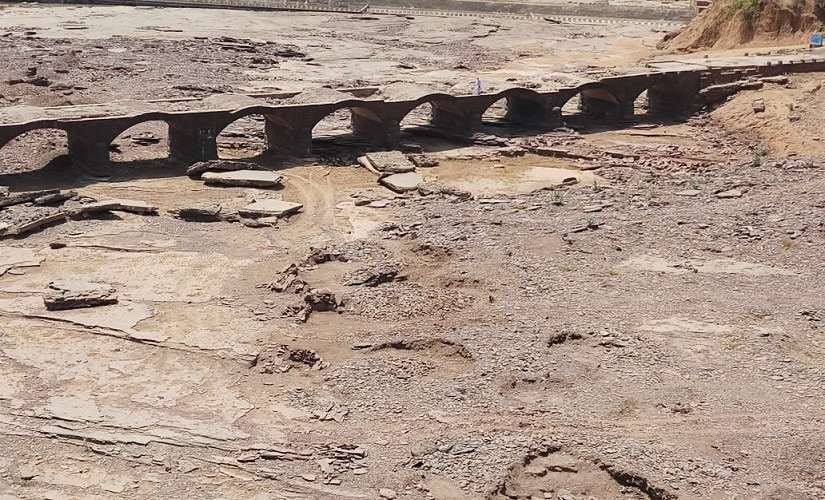
Almost 50-90 percent of water bodies, including rivers and Chandela pond, have dried up. Firstpost
Rivers like Ken, Dhasan, Sunar and Vyarma among others have dried in Bundelkhand. Water remains only in some deep pools.
Former chairman of Bundelkhand Development Authority Ramkrishna Kusmaria said, "These rivers seem to have lost their perennial nature and have become water bodies which flow in monsoon only."
In fact, almost all the rivers – including the Narmada, the lifeline of the state – have stopped flowing because of scanty rainfall last year. The Narmada flows only when water is released from one of the several dams built on the west flowing river.
Minister for public health engineering department (PHED) Kusum Mehdele said, "efforts are on to handle the crisis as efficiently as possible. Water is being transported to the places facing the crisis. At many places, even underground water has exhausted."
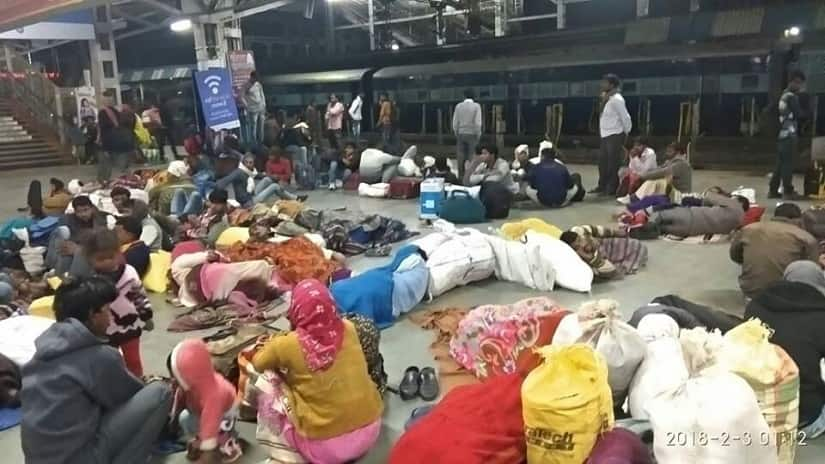
More than 80 percent farmers don’t find proper livelihood opportunity in villages and Almost 65 percent farmers in Bundelkhand have migrated to other places. Firstpost
Back-to-back droughts and erratic rainfall pattern in the era of global warming has in fact also drastically affected the groundwater level in the state. A report by the Central Ground Water Board (CGWB) compiled before the onset of summer this year revealed that in the last ten years in Madhya Pradesh, the water table is going down in the larger area but the recharge is happening in smaller parts.
Northern parts of the state – which include Gwalior and Chambal region, the drought-prone parts of Bundelkhand and parts of Mahakoshal region – are the worst affected, the report said.
Updated Date: May 14, 2018 11:58 AM



